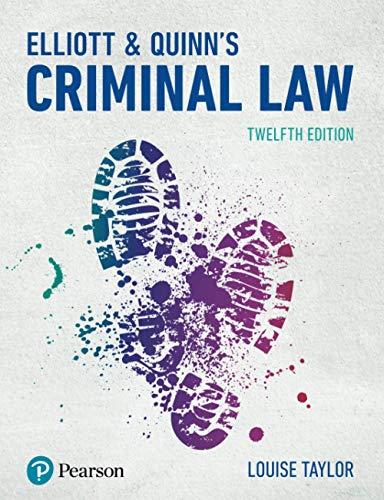Kindly assist me with the following homework. Attached are the questions 3,5, and 7.
.1" produced has a variable cost of 30p and sells for 50p. Any bread unsold at the end of each day is thrown away. At the start of each day, the manager must decide hostr many loaves to produce. The table below records sales over the past month: Deity sales Frequency 1003 ti 1200 10 1-100 10 1600 4 (a) Fixed costs are estimated at X per day. Find the breakeven number of leaves produced and sold, and the number it" expected dain prot was 50. {b} Find the number of leaves produced to minimise expected opportunity lees. {c} Bread is produced by a fullyr automated machine which mixes the dough, divides it into 1 lb units, lls each baking tin and passes them through art oven. Out of each batch, some are rejected for being undemeight or burnt. The proportion rejected has the probabilityr distribution given below: Fmporon rejected Probebity 0.05 0.15 0.10 0.50 0.15 0.15 {i} Find the number of loaves produced if the expected num- ber of saleable loaves equals your answer to question {b}. {ii} The services of a maintenanee engineer would set the rejection rate equal to 0.05, but would cost 11 per day. Advise the manager on whether to engage the engineer or not. if the desired daily.r production is 1300. 5. (a) (b) Evaluate the operational utility of demand elasticity estimates, and outline arty interpretations! difculties in the use of such estimates. The annual demand function for a particular motor car is estimated as: D=1titll-IDPI3+ YEMEN} where D=annual demand1 P=price in Fe and Y=average disposable income. (i) Given that the retail price next year will he 12 [tilt], whilst average disposable income is expected to be 3111}, esti- mate next year's annual demand. If the manufacturer receives 313% of the retail price for each ear sold, estimate the manufacturer's revenue next year. [ii] Find the retail price to maximise manufacturer's revenue next year. {iii} If the marginal cost per car is estimated to be 50m, nd the price to maximise prot next year. (iv) 1n the subsequent year the retail priee is expected to rise to Hi] {Iii}, whilst incomes should increase by 5%. Estimate demand and manufacturer's revenue for that year, and use this information to estimate the price and income demand elasticities. 7. (a) Compare and contrast the explanatory and extrapolatery approaches to demand estimation. Illustrate your answer with reference to the problem of estimating demand for a new luxury food processor. (b) The Welsh Kitchen Design Company sells its deluxe food proces- sor for f150/unit. Company experience suggests that both price and consumer incomes affect sales, with an estimated price elasticity of demand of -3.0, whilst income elasticity is estimated at 4.0. In 1986 the company sold one million units, whilst total consumer disposable income was $600 billion. Estimated con- sumer disposable income for 1987 is f650 billion. (i) Assuming price remains the same in 1987, estimate total sales revenue. Examination questions and answer notes 339 (ii) If 1988 consumer income is expected to remain constant at (650 billion, whilst price is expected to fall by $25, estimate sales revenue in 1988 (iii) Estimate sales revenue in 1988 if consumer income rises by 10% between 1987/88, whilst price falls by 15%. (iv) Use the information above to estimate demand as a linear function of price and income









